How the architecture in 'Kinds of Kindness' supports a 'vibrant version of Yorgos Lanthimos’ universe'
In 'Kinds of Kindness,' Yorgos Lanthimos' new film, opening in the UK this week, architecture shines through and becomes an important co-protagonist
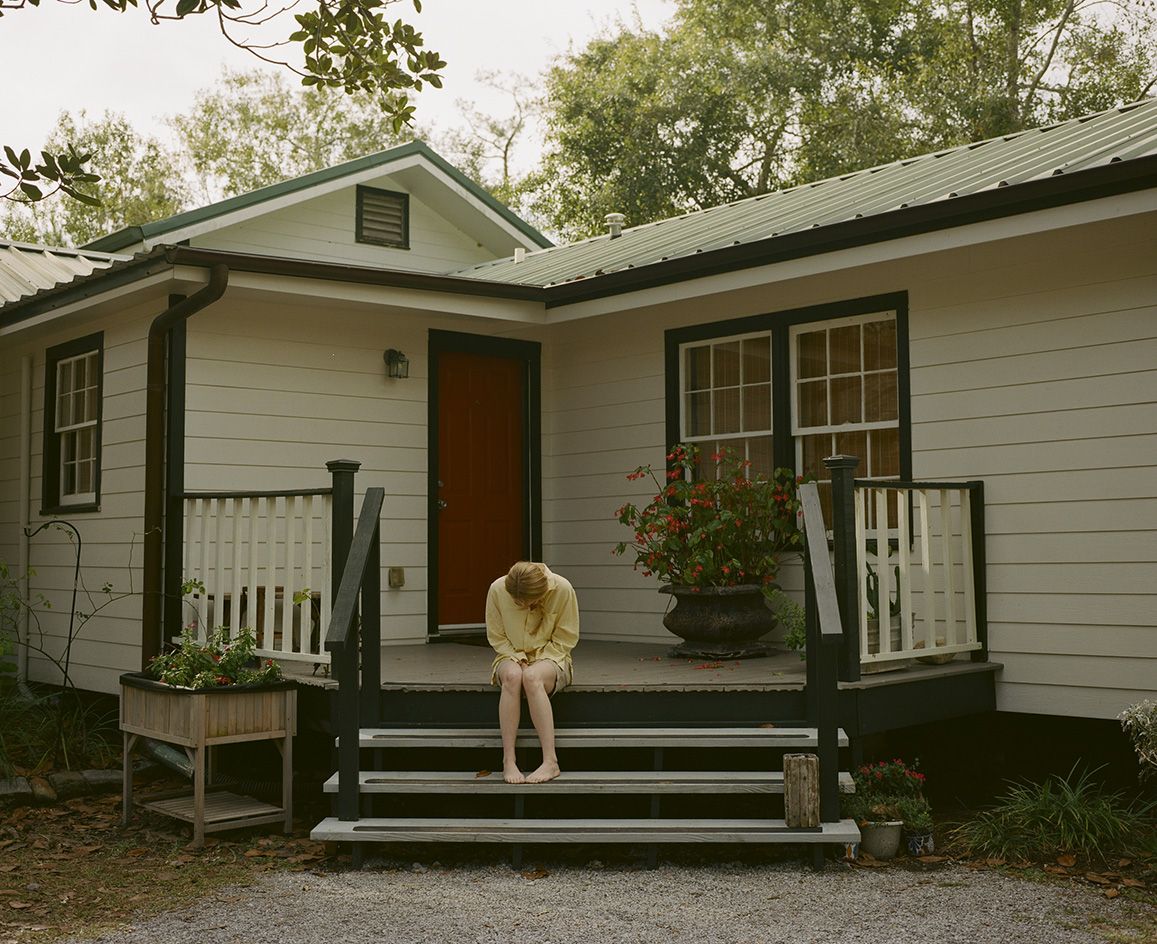
'Kinds of Kindness' premiered at the 2024 Cannes Film Festival in spring and is poised for release in the UK at the end of this week. The newest film by Yorgos Lanthimos, written by the Poor Things Academy Award® nominee and Efthimis Filippou, is a trilogy wrapped in a single piece of work - a movie tackling control, the absurd, and power dynamics in three parts, played by the same eight main actors, cast in different roles for each section. Architecture, a silent protagonist, is another constant throughout, setting the scene in a way only the built environment can and helping to tell Lanthimos' story.
'Kinds of Kindness' delves into themes often found in Lanthimos' world. Tragic irony, a sense of the surreal, and a sprinkle of the magical blend in a trio of stories that are only loosely interconnected through topics and places - offering different takes on the Greek director's fascinations. His star-studded cast, featuring a compact but expertly appointed team, includes Emma Stone, Jesse Plemons, Willem Dafoe, Margaret Qualley, Hong Chau, Joe Alwyn, Mamoudou Athie, and Hunter Schafer; the power of architecture in film becomes their co-star.
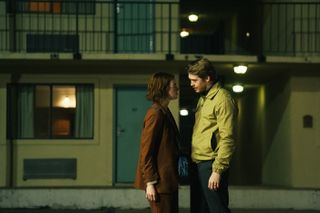
Exploring architecture in 'Kinds of Kindness'
Described as a 'triptych fable', the film unfolds, first, following a man, controlled by another, trying to get back in the driver's seat of his own life; then, a policeman whose disappeared - presumed dead - wife miraculously returns, but seemingly changed in a disturbing, uncanny way; and finally, a woman who, as part of a spiritual cult, is obsessed with finding a miracle maker. In each of these tales, architecture is pivotal, tells 'Kinds of Kindness' production designer Anthony Gasparro who oversaw how the clearly carefully curated and styled, but ultimately soft and discreet built environment presence appears throughout (all set in an abstract, unnamed southern State of America told through glimpses of New Orleans - but more on this later).
Gasparro says: 'Creating three distinct narratives significantly increased the number of sets and locations. The only recurring set is the hospital, providing a loose connection between the stories. We shot Raymond's office on an abandoned floor at 650 Poydras in Downtown NOLA, which had great windows and a stunning view of other nondescript buildings. Liz's doctor's office exterior was an old hospital used to house people during the aftermath of Hurricane Katrina. Most locations were chosen for their generality to avoid placing the film in a specific geographical location.'
Most locations were chosen for their generality, to avoid placing the film in a specific geographical location
Production Designer, Anthony Gasparro
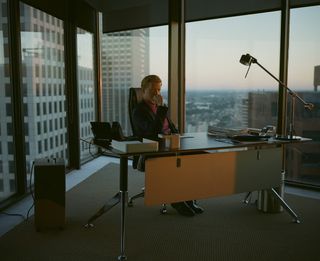
Each section of the film has its own, subtly distinct feel. The architectural fabric supports and frames that - the last tale's heroine's conflicts are expressed through images that alternate a certain affluence and the nondescript or mundane; the middle one invites us into a more commonplace setting and an at-first-glance everyday family context (although this is soon negated); and the opening section discusses power and dominance through a stern, highly staged architectural context.
'In the first story, the spaces where Raymond lives and works are central to the narrative. His office, located on the top floor of an impressive commercial building, is modern and sterile, reflecting his clinical, detached personality. Conversely, his mansion showcases his wealth, taste, and power. The living room, designed around a massive Biedermeier sofa, serves almost as a throne where he holds court,' Gasparro explains.
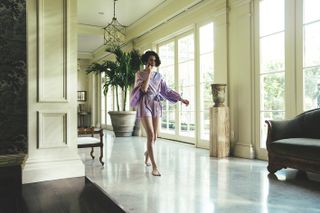
'Richard's office, in contrast, features acutely triangular walls with floor-to-ceiling glass windows, creating an extremely disorienting space reminiscent of Irving Penn's photography. This setting suggests that Richard feels trapped and part of something larger and more perilous than himself, as if perched dangerously atop Raymond's glass nest. Other locations in the film were conceived as extensions of Raymond's influence, most evident in Rita’s home, which resembles a model home, devoid of personal touches or signs of being lived in.'
Wallpaper* Newsletter
Receive our daily digest of inspiration, escapism and design stories from around the world direct to your inbox.
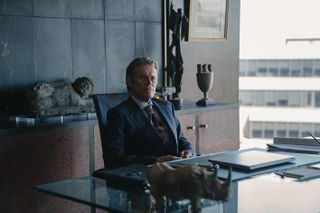
In the second film, the storyline begins by bringing the audience into a more 'everyday', domestic setting. The protagonists, Dan and Liz have middle-class occupations and live in a comfortable cottage. However, as the plot thickens and Liz's seemingly unnatural return drives the narrative, the house's dark wood cladding adds to the tension and the sense of claustrophobia that emerges. 'The cinematographer, Robby Ryan, used our bamboo shades to create thick shadows and stunning filtered light, perfectly capturing the increasing strangeness of their situation,' says Gasparro.
The cinematographer, Robby Ryan, used our bamboo shades to create thick shadows and stunning filtered light, perfectly capturing the increasing strangeness of their situation
Production Designer, Anthony Gasparro
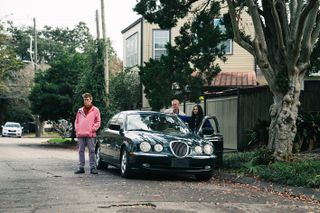
The third and final segment is perhaps more clearly set in the American South, blending grandeur and familiarity, adding the tactility and outdoor qualities of life of the region's vernacular architecture in the mix. Still, a sense of place is only hinted at abstractly, leaving questions about a specific location open-ended.
'The final story showcases some of my favourite set pieces and architecture. The lake house where the cult resides is a late '80s architectural marvel on Lake Pontchartrain. This location was crucial for the film, as we needed a house large enough to accommodate all the followers, isolated from other homes, and with lake access for their yacht. I created a backstory that the house was hastily abandoned in the late '90s for nefarious reasons, later retrofitted by Omi and Aka to suit their needs,' adds Gasparro.
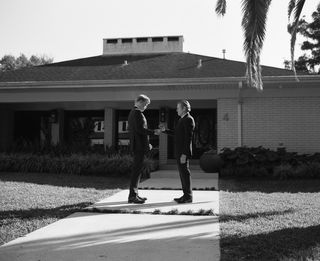
'The motel in the story has a strange yet familiar architecture. We scouted around 20 options, but this one stood out for its eerie, transient feeling, fitting perfectly with the scenes that take place there. Emma, Joe and their daughter's home is an unremarkable house in a nondescript neighbourhood, exemplifying the weird and absurd events that occur in Yorgo’s world.'
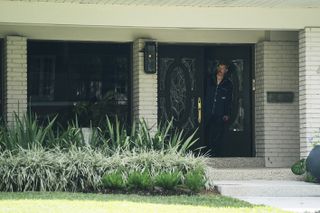
Though filmed in New Orleans, the film avoids obvious landmarks that would spell this out; although if you know the city, you'll know 'Kinds of Kindness' is set there. And even as challenges appear in every production - from budgetary ones to last-minute changes and availability of specific places, the production designer flags- the result feels like an uncompromising, coherent take of its author's vision. Gasparro concludes: 'The film ultimately came together, creating another vibrant version of Yorgo’s universe.'
Ellie Stathaki is the Architecture & Environment Director at Wallpaper*. She trained as an architect at the Aristotle University of Thessaloniki in Greece and studied architectural history at the Bartlett in London. Now an established journalist, she has been a member of the Wallpaper* team since 2006, visiting buildings across the globe and interviewing leading architects such as Tadao Ando and Rem Koolhaas. Ellie has also taken part in judging panels, moderated events, curated shows and contributed in books, such as The Contemporary House (Thames & Hudson, 2018), Glenn Sestig Architecture Diary (2020) and House London (2022).
-
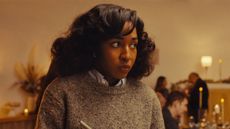 Sundance Film Festival 2025: The films we can't wait to watch
Sundance Film Festival 2025: The films we can't wait to watchSundance Film Festival, which runs 23 January - 2 February, has long been considered a hub of cinematic innovation. These are the ones to watch from this year’s premieres
By Stefania Sarrubba Published
-
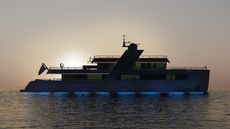 Wellness takes to the skies and the high seas in this concept superyacht and private jet retrofit
Wellness takes to the skies and the high seas in this concept superyacht and private jet retrofitHigh-end mobility design pivots to minimalist calm and life-affirming ambience as wellness trends take hold. The Sea Rover yacht and Afterglow private jet point the way
By Jonathan Bell Published
-
 Tour 21 lesser-known modernist houses in Europe
Tour 21 lesser-known modernist houses in EuropeTake a tour of some of Europe's lesser-known modernist houses; architectural writer and curator Adam Štěch leads the way, discussing the 20th-century movement's diversity under a single vision
By Adam Štěch Published
-
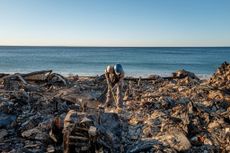 LA Mayor Karen Bass outlines her plan for rebuilding the city
LA Mayor Karen Bass outlines her plan for rebuilding the cityFollowing the devastating LA wildfires, which have destroyed more than 12,000 structures, the city’s mayor has outlined her plan for reconstruction
By Anna Solomon Published
-
 Frank Lloyd Wright’s Weisblat House, a Usonian modernist Michigan gem, could be yours
Frank Lloyd Wright’s Weisblat House, a Usonian modernist Michigan gem, could be yoursFrank Lloyd Wright’s Weisblat House in Michigan is on the market – a chance to peek inside the heritage modernist home in the countryside
By Audrey Henderson Published
-
 Cabin House is a simple modernist retreat in the woods of North Carolina
Cabin House is a simple modernist retreat in the woods of North CarolinaDesigned for downsizing clients, Cabin House is a modest two-bedroom home that makes the most of its sylvan surroundings
By Jonathan Bell Published
-
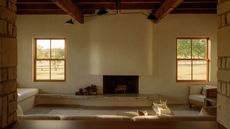 A Texas ranch house blends Californian charm and Asian minimalism in a 'balance in hybridity'
A Texas ranch house blends Californian charm and Asian minimalism in a 'balance in hybridity'Pontious, a Texas ranch house designed by OWIU, is a home grounded in its owner's cultural identity, uniting Californian, Chinese and Japanese roots
By Tianna Williams Published
-
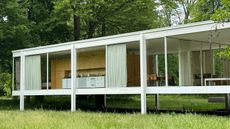 The three lives of the Edith Farnsworth House: now, a modernist architecture icon open to all
The three lives of the Edith Farnsworth House: now, a modernist architecture icon open to allThe modernist Edith Farnsworth House has had three lives since its conception in 1951 by Mies van der Rohe; the latest is a sensitive renovation, and it's open to the public
By Audrey Henderson Published
-
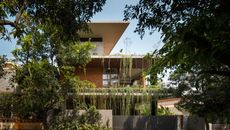 Year in review: the top 12 houses of 2024, picked by architecture director Ellie Stathaki
Year in review: the top 12 houses of 2024, picked by architecture director Ellie StathakiThe top 12 houses of 2024 comprise our finest and most read residential posts of the year, compiled by Wallpaper* architecture & environment director Ellie Stathaki
By Ellie Stathaki Published
-
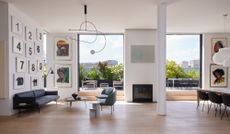 A vacant Tribeca penthouse is transformed into a bright, contemporary eyrie
A vacant Tribeca penthouse is transformed into a bright, contemporary eyrieA Tribeca penthouse is elevated by Peterson Rich Office, who redesigned it by adding a sculptural staircase and openings to the large terrace
By Léa Teuscher Published
-
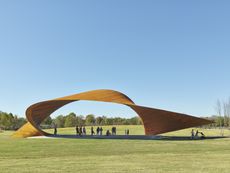 We walk through Luther George Park and its new undulating pavilion
We walk through Luther George Park and its new undulating pavilionLuther George Park by Trahan Architects and landscape architects Spackman Mossop Michaels opens to the public, showcasing a striking new pavilion installation – take a first look
By Ellie Stathaki Published